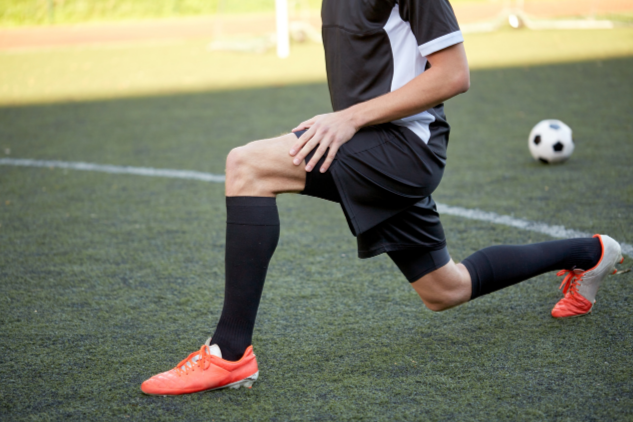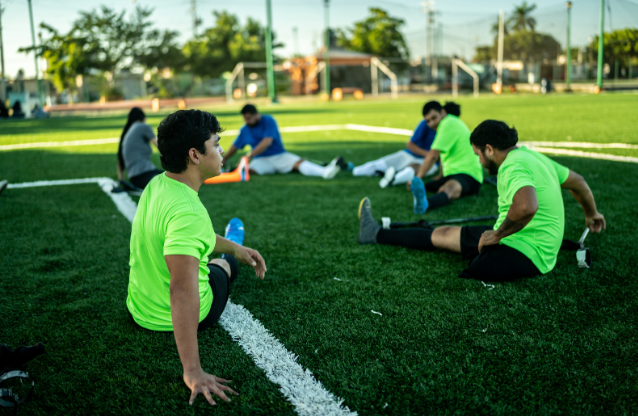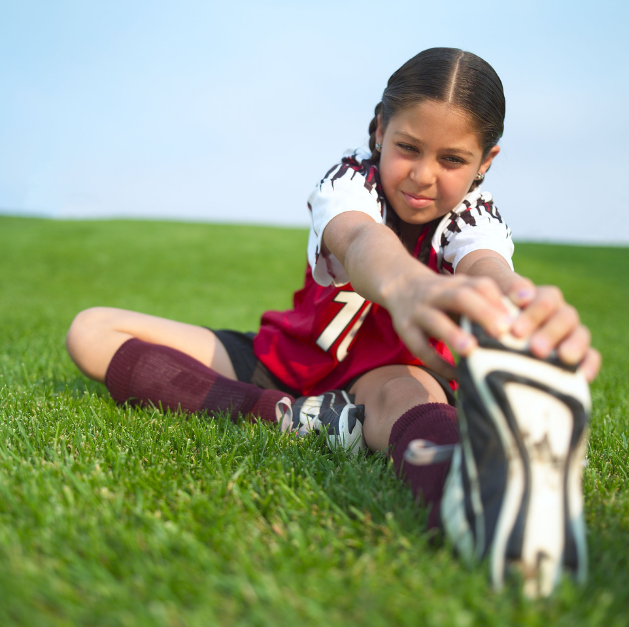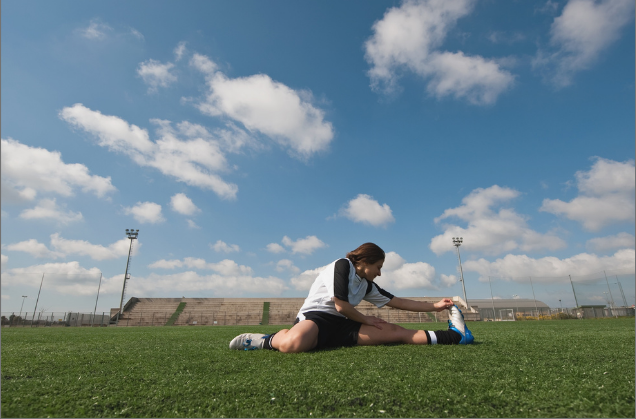Building Champions One Stretch at a Time
Picture this: It’s Saturday morning, the dew is still glistening on the grass, and your young soccer players are bouncing with excitement, eager to get straight into scrimmaging. But hold on—before those first kicks fly across the field, there’s something absolutely critical that needs to happen first: a proper warmup routine. As a youth soccer coach, establishing a comprehensive youth soccer warmup routine isn’t just about preventing injuries (though that’s incredibly important). It’s about setting the tone for practice, building team unity, and preparing young bodies and minds for the beautiful game ahead.
Why Warmup Routines Matter More Than You Think

Youth soccer players, typically ages 6-18, are still developing physically. Their muscles, joints, and coordination systems need time to transition from everyday activities to the dynamic movements soccer demands. A proper warmup increases blood flow to muscles, improves flexibility, enhances reaction time, and significantly reduces the risk of common soccer injuries like ankle sprains, hamstring pulls, and knee injuries.
Research shows that youth athletes who participate in structured warmup programs experience up to 35% fewer injuries compared to those who skip this crucial step. But beyond injury prevention, warmups also improve performance—players who warm up properly show better sprint times, more accurate passing, and improved decision-making on the field.
The Complete Youth Soccer Warmup Routine
Phase 1: Light Cardiovascular Activity (5-7 minutes)
Start every session with gentle movement to gradually increase heart rate and body temperature.
Jogging Variations:
- Begin with a light jog around the field perimeter
- Progress to side shuffles along the sideline
- Add high knees for 20-30 steps
- Include butt kicks for another 20-30 steps
- Finish with gentle backward jogging
Coach Tip: Have players jog in a large circle, then call out different movements every 30 seconds. “High knees!” followed by “Side shuffle right!” This keeps them engaged while warming up systematically.
Phase 2: Dynamic Stretching (8-10 minutes)
Unlike static stretching, dynamic stretches involve controlled movement that prepares muscles for soccer-specific actions.
Leg Swings (Front to Back): Standing beside a cone or goalpost for balance, players swing one leg forward and backward in a controlled motion. Start with small swings and gradually increase range. Perform 10-15 swings per leg. This targets hip flexors and hamstrings—crucial for running and kicking.
Leg Swings (Side to Side): Facing a support, swing the leg across the body and then out to the side. This opens up the hip joint and prepares the groin muscles. Again, 10-15 swings per leg.
Walking Lunges: Step forward into a deep lunge, keeping the back straight and front knee over the ankle. Push off the front foot to step into the next lunge. This activates glutes, quadriceps, and improves hip mobility. Perform 10-12 lunges total.
High Knees March: Standing tall, march in place while bringing knees up toward chest level. Focus on controlled movement rather than speed. This activates hip flexors and core muscles. Continue for 30-45 seconds.
Frankenstein Walk: Walk forward while kicking straight legs up toward outstretched hands. This dynamic stretch targets hamstrings while improving balance and coordination. Take 10-15 steps.
Ankle Circles and Calf Raises: Since soccer involves constant direction changes, ankle preparation is crucial. Have players perform 10 circles in each direction per ankle, followed by 15-20 calf raises.

Phase 3: Soccer-Specific Movements (5-7 minutes)
Now transition to movements that directly mimic soccer actions.
Lateral Shuffles: Set up cones 10 yards apart. Players shuffle sideways, staying low with knees bent, touching each cone before changing direction. This prepares the body for defensive movements and quick direction changes.
Karaoke/Carioca: Moving laterally, players cross one foot over the other, then behind, creating a weaving pattern. This complex movement improves hip mobility, footwork, and coordination.
Sprint Buildups: Start with 50% effort jogging, gradually increasing to 75% over 20-30 yards, then walking back. Repeat 3-4 times. This bridges the gap between warmup and full-intensity activity.
Plyometric Preparation: Include 5-10 gentle hops, both feet together, to prepare for jumping movements like heading. Progress to single-leg hops if age-appropriate.
Age-Specific Considerations

Ages 6-10: Keep warmups fun and game-like. Use animal movements (bear crawls, frog jumps), follow-the-leader activities, and simple stretches. Total warmup time: 10-12 minutes.
Ages 11-14: Introduce more structured movements while maintaining engagement through variety. Begin teaching proper stretching techniques. Total warmup time: 15-18 minutes.
Ages 15-18: Implement comprehensive routines similar to adult programs, emphasizing injury prevention and performance preparation. Total warmup time: 18-20 minutes.
Common Mistakes to Avoid
Never rush the warmup because you’re short on time—this is when injuries most commonly occur. Avoid static stretching before activity (save it for cool-down). Don’t make warmups so intense that players are tired before the main activity begins. And remember: consistency is key. The same routine helps players develop body awareness and creates a sense of security and preparation.
The Power of Team Unity: Warming Up Together
There’s something magical that happens when a youth soccer team moves through their warmup routine in unison. Beyond the obvious physical benefits, this shared experience creates powerful psychological and social advantages that extend far beyond the soccer field.
When players warm up together as a unit, they develop a collective rhythm and energy that translates directly into better on-field chemistry. They learn to move as one organism, reading each other’s pace and intensity levels. This synchronization builds the foundation for coordinated passing, defensive positioning, and tactical execution during games.
The warmup also serves as a daily ritual that helps players transition mentally from their individual lives into their role as team members. It’s during these 15-20 minutes that shy players gain confidence, natural leaders emerge, and the group establishes its identity for that practice or game. Coaches often observe that teams who warm up together with focus and energy consistently outperform those who treat it as a casual afterthought.
Perhaps most importantly, the shared warmup routine teaches young athletes the value of preparation and mutual accountability. When every player commits to the process together, they’re essentially saying, “We’re all invested in each other’s success and safety.” This mindset becomes the cornerstone of championship teams and lifelong friendships.
Making It Stick
The most effective youth soccer warmup routines are those that become second nature. Start each season by teaching the routine step-by-step, explaining why each component matters. Make it engaging with music, friendly competition, or rotation of leadership roles among players.
Remember, you’re not just preparing bodies for soccer—you’re building habits that will serve these young athletes throughout their sporting careers and beyond. A well-designed warmup routine teaches discipline, the importance of preparation, and respect for their bodies and teammates.
Your youth soccer team’s success story begins not with the first goal scored or game won, but with that first purposeful step of their warmup routine. Make it count.
Ready to implement these strategies with your youth soccer team? Start with just 2-3 of these exercises and gradually build your routine over several practices. Consistency and proper form are more important than doing everything at once.
Also, make sure you do not miss out on what to pack for each gameday or how indoor soccer can help you youth soccer players development.

